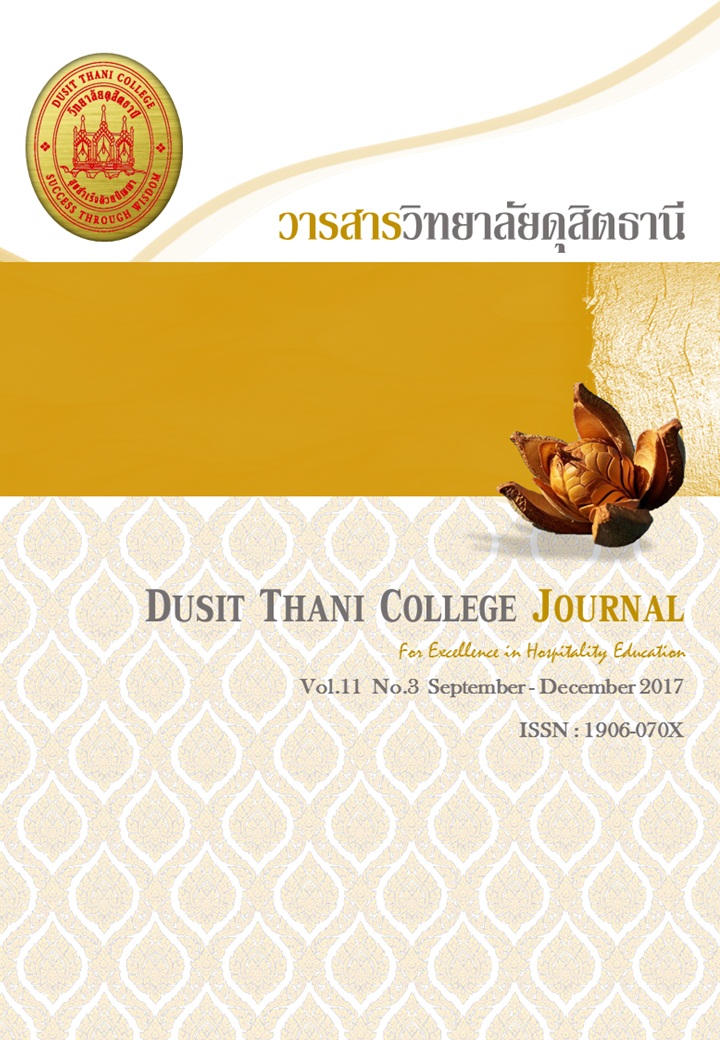The Development of Dual Vocational Education System Management Model for Industrial Division in the Vocational Institute of Central Region
Main Article Content
Abstract
Research objectives were 1) to study the problem and the management system for the vocational education in the field of Industrial Office of Vocational Education Commission 2) to develop a management model for Dual Vocational Education in industrial schools under the Central Institute of Vocational Education. This research is correlational research. The process was conducted through reviews on related literature, expert’s comments, previous feedbacks, as well as data regarding needs in the program development. The data were obtained from the recommendations of the expert study of 42 people and the development of a management system vocational. The sample is school administrators, Deputy Director of Academic Affairs,
Chief Dual Vocational Training, Head of curriculum instruction, Head of Measurement and Evaluation, Teachers/teacher supervision in schools, Teacher training the establishment of 57 schools per 684 people including 12 people who collected data using questionnaires.
The statistics were used to analyze quantitative data by correlation analysis, Regression, Exploratory Factor Analysis Path Analysis and Confirmatory Factor Analysis and then analysis the model of Dual Vocational System Model Management for Industrial Division in the Central Region Institute of Vocational Education Commission. Research results found that 1) Dual Vocational System Model Management for Industrial Division in the Central Region Institute of Vocational Education Commission issues of teaching and learning, the curriculum construction, public relations and coordination, educational supervision and measurement and evaluation in education.
2) Factors affecting the development of a vocational management system. There are two factors include teaching and learning, the curriculum, public relations and coordination, educational supervision and measurement and evaluation in education. All factors can explain Dual Vocational System Management Model for Industrial Division in the Central Region Institute of Vocational Education Commission has 82.90 percent by factors that include the most. The teaching and learning factor followed by the measurement and evaluation in education, educational supervision, public relations and coordination and curriculum respectively
3) the development of Dual Vocational System Model Managements for Industrial Division were consistent with the empirical data which shown by statistics of regular models.
Chi-square = 637.351, df = 378, p = .058, GFI = .960, AGFI = .923, CFI = .982, RMR = .038,
RMSEA = .042
Article Details
Article Screening Policy
- All research and academic articles to be published must be considered and screened by three peer reviews in the relevant field / article.
- All articles, texts, illustrations and tables published in the journal are the personal opinions of the authors. Editors don't always have to agree. And no responsibility whatsoever is the sole responsibility of the author.
- The articles to be published must never be published. Where did you first publish? And not in the consideration of other journals If the audit found that there has been a duplicate publication It is the sole responsibility of the author.
- Any article that the reader sees as being plagiarized or impersonated without reference. Or mislead the work of the author Please let the journal editor know it will be your greatest blessing.
References
Siam Pring, Bangkok.
BoonSawat Walairat. (1995). Principles of Education Supervision. Faculty of education, Chulalongkorn University.
Burton and Brueckner (1995). Supervisor Instruction : A developmental Process.
New York. McGraw-Hill Book.
Dunn, William N. (1994) Public Policy Analysis : An Introduction. 2nded. Englewood Cliffs,
New Jersey : Prentice - Hall.
Gheranun Teanchai. (1988). Social science research. Bangkok: Chulalongkorn University.
Keawmaneesri Benjaporn. (2002). "Presentation of the frog-shaped saw their feature development Executive's nursing college, attached to the Ministry of health",
Ph.d. thesis, Bachelor of engineer, Chulalongkorn University.
Khaemmanee Tisana. (2007). Knowledge for effective learning process. 6th printing
Dhansutha Pringing, Bangkok.
Kline, R. B. (2005). Principles and Practice of Structural Equation Modelings. (2nded.). New York: Guilford.
Krejcie, Robert V. and Morgan, Daryle W. (1970). Determining Sample Size for ResearchActivities. Educational and Psychological Measurement. v. 30, 607 - 610.
Laoreandee Watchara. (2001). Technique and skill in teaching supervision. Nakhon Pathom: Faculty of education Silpakorn University.
Leethamachayo Aroonkaew. (2541) . A study of the course of Dual Vocational Education operation Department of vocational technical college. Chulalongkorn University.
Ornstein and Hunkins. (1993). Curriculum Foundations, Principles and Issues. (2 nded.)
Boston : Allyn and Bacon.
Phromsena Phaitoon. (2002). Project evaluation activities 5 S.Flight centers in Chiang Mai of public.
The graduate school. Chiang Mai University.
Poolkrachang Arkkarat. (1999). Vocational education management system issues for Dual Vocational Education of teachers in educational, vocational and teacher training Department, the establishment of industrial education dissertation methodology. Department of mechanical engineering education graduate,
King Mongkut's Institute of technology North Bangkok.
PROSSER, CHARLES A.; HAWKINS, LAYTON S.; and WRIGHT, JOHN C. (1951).
Development of Education. Chicago: American Technological Society.
Ruamchomrat Jintana. (2015). The development of the bilateral system of vocational education management pattern in vocational college. Office of vocational education Commission. Graduate philosophy dissertation, Rajabhat Kanchanaburi University.
Srichompoo Thanin (2014). The development model of vocational education system in school under a Dual Vocational Education. Commission on vocational education
Bachelor of education doctorate thesis. branch management education lecturers. Graduate philosophy dissertation, Faculty of education, Naresuan University.
Sritrakul Voravit. (1997). Reviews of establishments that participate in organizing vocational training Bilateral subjects with mechanics. The North East technical college.
Science University-industry management of vocational college graduates,
King Mongkut's Institute of technology Ladkrabang.
The Office of vocational education Commission (2005). Uniting vocational Create a build strong national construction drive are the people of the country.
_______ (2007). Management report study the bilateral Commission on vocational education.
The Office of vocational education Commission, 2003).
_______ (2014). Executive Summary: driving education school year 2557.
Tippawan Taemeyakul. (2009) The basic Model of Moral development of students grade 5 Phromsakorn school. Phromsakorn school, Singburi,
Wittaya Wipawat. (1999). The development of teaching management Professional diploma course Dual Vocational Eduation System B.E. 2545 Building construction disciplines in the eastern part of vocational education Institute. King Mongkut's Institute of technology North Bangkok.

